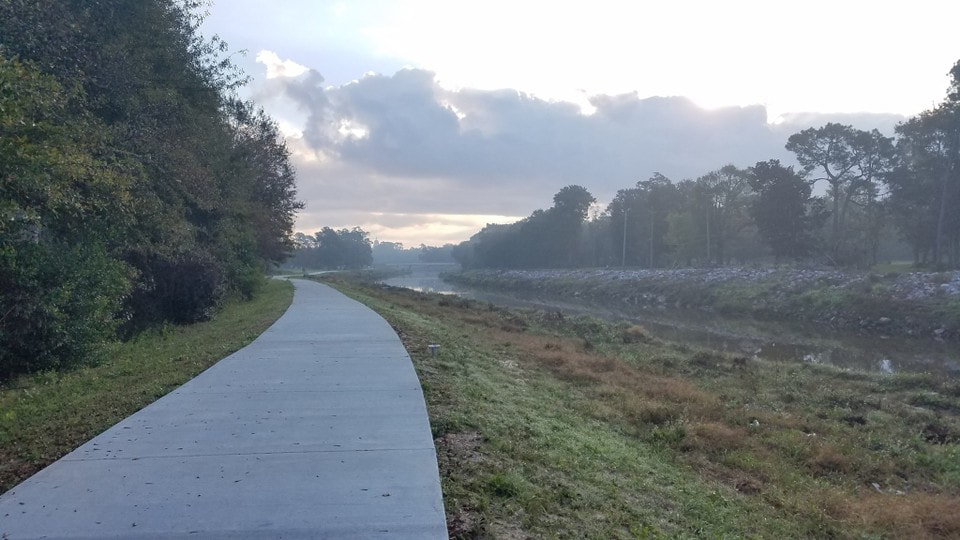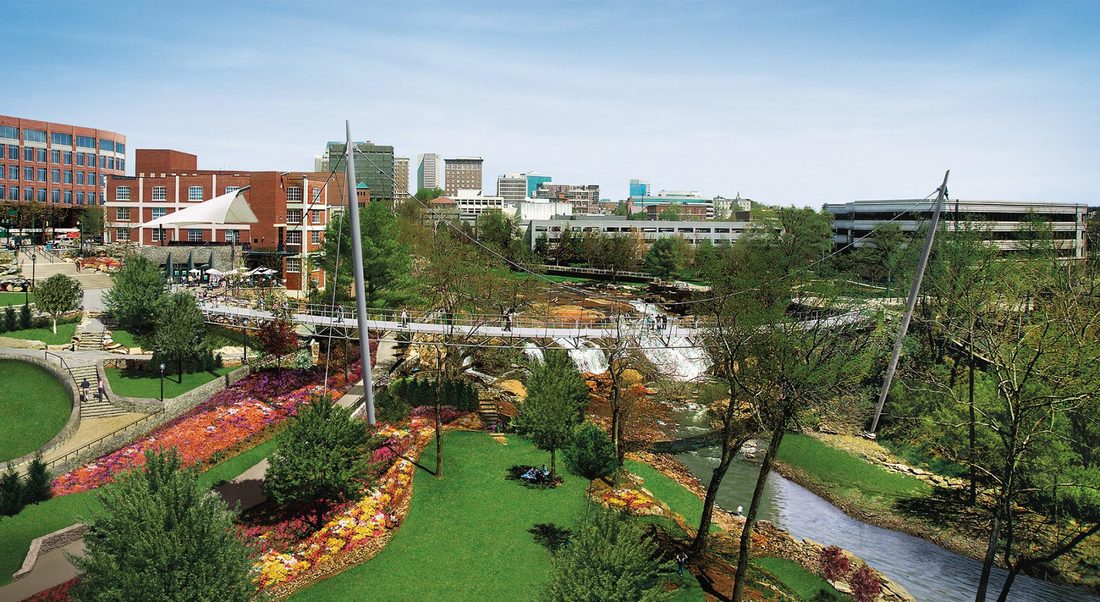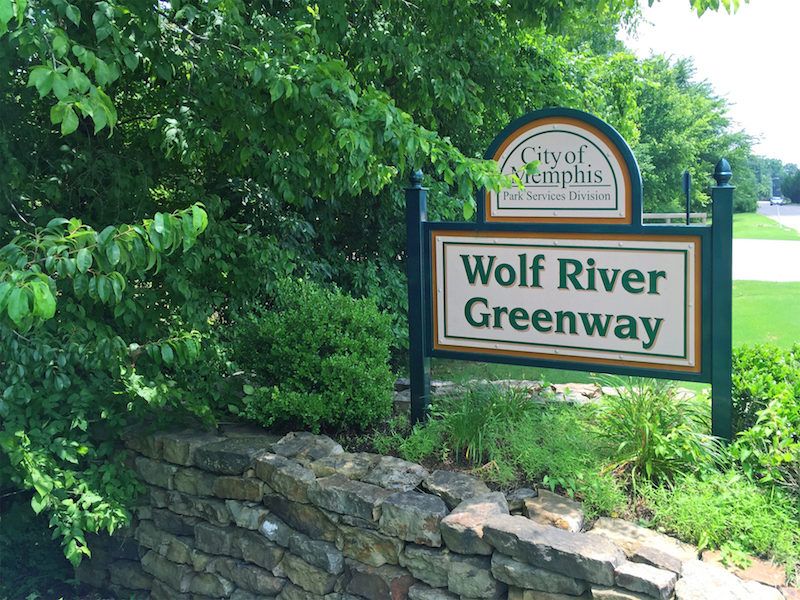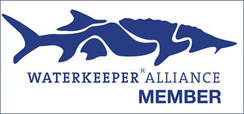Economic growth through environmental restoration:
Greenway projects
What is a Greenway?
"A greenway is a long corridor of protected open space, usually following natural geographic features, planned for environmental or scenic protection and to provide opportunities for recreation and non-motorized transportation. Most greenways include a trail or bike path. Sometimes called linear parks, greenways provide tree cover, wildlife habitat, and riparian buffers to protect streams. The environmental benefits include reduced storm water runoff, flood reduction, water quality protection, and preservation of biological diversity. The trails within the greenways provide access between neighborhoods and destination points, opportunity to travel without an automobile, outdoor education classrooms, and paths for walking, jogging, and bicycling." Wolf River Conservancy
"A greenway is a long corridor of protected open space, usually following natural geographic features, planned for environmental or scenic protection and to provide opportunities for recreation and non-motorized transportation. Most greenways include a trail or bike path. Sometimes called linear parks, greenways provide tree cover, wildlife habitat, and riparian buffers to protect streams. The environmental benefits include reduced storm water runoff, flood reduction, water quality protection, and preservation of biological diversity. The trails within the greenways provide access between neighborhoods and destination points, opportunity to travel without an automobile, outdoor education classrooms, and paths for walking, jogging, and bicycling." Wolf River Conservancy

Photo by Lawrence Specker, [email protected]
|
3 Mile Creek Greenway : Mobile, AL
3 Mile Creek is a watershed that lies mostly within Mobile City limits and drains to the Mobile River. For decades, this waterway was so highly impacted by excessive water quality pollutants that the creek did not even meet the lowest water quality standards for the state of AL. The 3 Mile Creek Partnership has developed a plan to harness the economic growth potential created by a newly restored watershed and greenway project. "The 3 Mile Creek Greenway Trail is envisioned as a greenway that will connect forest, parks and neighborhoods in a cohesive greenway system to be enjoyed by trail users while supporting the healthy floodplain ecology of Three Mile Creek." |
About the 3 Mile Creek Greenway:
Three Mile Creek Watershed
Transforming Three Mile Creek
Three Mile Creek Watershed Management Plan
Mobile's Three Mile Creek Greenway: Path and promise for a neglected waterway
Three Mile Creek Watershed
Transforming Three Mile Creek
Three Mile Creek Watershed Management Plan
Mobile's Three Mile Creek Greenway: Path and promise for a neglected waterway
|
Reedy River Falls Historic Park and Greenway: Greenville, SC
Reedy River running through the heart of downtown Greenville was highly degraded by industries using the river as a waste dump. The river was surrounded by an area of blight and the Reedy River Falls was blocked from view by a 4-lane highway bridge. The development of Reedy River Falls Historic Park and Greenway began in the 1990s and has entirely revitalized a downtown that is now filled with thousands of stores and restaurants. The focal point of downtown is the award-winning Liberty walking bridge, and Swamp Rabbit Trail connecting parks, blueways and greenways. The Greenway in downtown Greenville restored a natural resource, increased resident quality of life and supercharged the local economy. |
About the Reedy River Falls Historic Park and Greenway:
Falls Park, Greenville, SC
The Reedy River Greenway
Greenville Swamp Rabbit Trail
Falls Park, Greenville, SC
The Reedy River Greenway
Greenville Swamp Rabbit Trail
|
Wolf River Greenway: Memphis, TN
The Wolf River Greenway in Memphis is a planned 36 mile trail surrounded by natural resource conservation areas. "The Wolf River Greenway will help to connect people and communities, raise property values, reduce crime, encourage healthy lifestyles, and improve the general quality of life in adjacent neighborhoods. Meandering along the banks of the Wolf River, this scenic greenway will be a centerpiece for the transformation of the Mid-South into a 21st century community, allowing users to experience the natural beauty of bottomland hardwood forests and wetlands, and to visit local shops and cafes along the way via multiple access points. The Wolf River Greenway will also intersect with other area trail systems including the Shelby Farms Greenline, providing visitors with a link to the largest urban park, Shelby Farms Park, in the United States." Wolf River Conservancy |
Wolf River Restoration Project: Memphis, TN
"In 2004, construction began on a $12.5 million Wolf River Restoration Project, a result of a partnership between the Wolf River Conservancy and the U.S. Army Corps of Engineers. The goal of the project was to control and prevent the erosion of the Wolf River channel through a process called "headcutting." This destructive process was one consequence of channelizing - straightening and deepening - the river during the 1960's. About 22 miles of the river was channelized, from its mouth at the Mississippi River to Gray's Creek in Germantown near Houston Levee Rd., to allow for increased development and flood control. Such straightening and deepening of the river channel increased the velocity of the water moving through it and created essentially a "waterfall" where the unchannelized upper river met the lower channel of the altered river, causing continuous headcutting erosion of the banks and channels farther and farther upstream. It had already passed Houston Levee Rd. and was a very real threat to the 70 miles of river upstream, draining it surrounding wetlands, floodplain forests and aquifer recharge areas, while also undermining the support piers of all the highway bridges that cross the Wolf River.
When funding for this critical project was cut to zero in 2005 during a round of federal budget cuts, Wolf River Conservancy members overwhelmed their senators and congressmen with letters, emails, and phone calls demanding that funding be restored so that the project could be completed. Soon, we were asked to "call off the dogs!" We did, and the project's 12.5 million in funding was restored by Congress and never threatened again. The Wolf River Restoration Project was largely completed in 2009." The Wolf River Restoration Conservancy
"In 2004, construction began on a $12.5 million Wolf River Restoration Project, a result of a partnership between the Wolf River Conservancy and the U.S. Army Corps of Engineers. The goal of the project was to control and prevent the erosion of the Wolf River channel through a process called "headcutting." This destructive process was one consequence of channelizing - straightening and deepening - the river during the 1960's. About 22 miles of the river was channelized, from its mouth at the Mississippi River to Gray's Creek in Germantown near Houston Levee Rd., to allow for increased development and flood control. Such straightening and deepening of the river channel increased the velocity of the water moving through it and created essentially a "waterfall" where the unchannelized upper river met the lower channel of the altered river, causing continuous headcutting erosion of the banks and channels farther and farther upstream. It had already passed Houston Levee Rd. and was a very real threat to the 70 miles of river upstream, draining it surrounding wetlands, floodplain forests and aquifer recharge areas, while also undermining the support piers of all the highway bridges that cross the Wolf River.
When funding for this critical project was cut to zero in 2005 during a round of federal budget cuts, Wolf River Conservancy members overwhelmed their senators and congressmen with letters, emails, and phone calls demanding that funding be restored so that the project could be completed. Soon, we were asked to "call off the dogs!" We did, and the project's 12.5 million in funding was restored by Congress and never threatened again. The Wolf River Restoration Project was largely completed in 2009." The Wolf River Restoration Conservancy
About the Wolf River Greenway:
Wolf River Greenway
Wolf River Greenway: Health and Economic Impacts
Wolf River Restoration Project
Wolf River Greenway
Wolf River Greenway: Health and Economic Impacts
Wolf River Restoration Project



